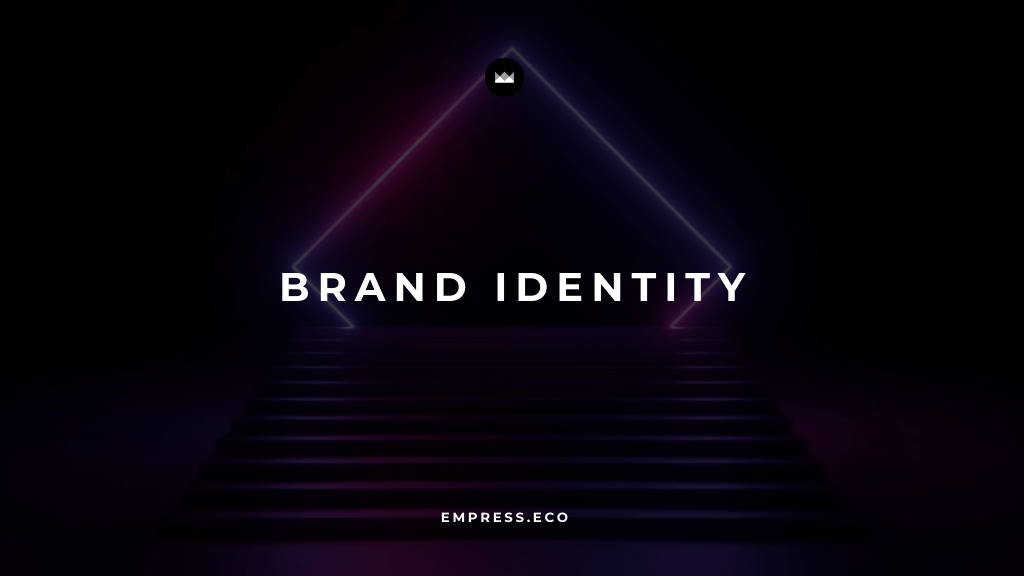
Brand Identity: Crafting a Distinctive and Compelling Brand Presence
Table of Contents
A strong brand identity is not just an asset—it’s a necessity. Your brand identity is the face of your business, the unique combination of values, personality, and visual elements that sets you apart from competitors. It’s how your customers recognize you, how they remember you, and ultimately, how they decide whether to trust and engage with your brand. A compelling brand identity communicates who you are, what you stand for, and what promises you make to your customers.
Brand identity is much more than a logo or a catchy slogan; it’s the sum of all the elements that come together to create a consistent and impactful brand presence. From the tone of your messaging to the colors you use in your marketing materials, every detail contributes to how your brand is perceived. When done right, a strong brand identity can enhance recognition, foster loyalty, and drive business growth.
Why Brand Identity Matters
Before diving into the strategies for creating a compelling brand identity, it’s important to understand why it’s so crucial for your business. In a crowded marketplace, where consumers are bombarded with countless choices, a strong brand identity is what helps you stand out. It’s the reason why customers choose your product over another, why they trust your brand, and why they come back time and time again.
A well-crafted brand identity serves as a north star for all your marketing efforts, guiding how you communicate with your audience, how you present your products or services, and how you engage with the market. It’s the foundation upon which your brand is built, and it plays a critical role in shaping customer perceptions and driving loyalty.
Key Benefits of a Strong Brand Identity
To truly appreciate the impact of a strong brand identity, let’s explore some of the key benefits it brings to your business.
1. Enhanced Recognition and Recall
One of the primary benefits of a strong brand identity is its ability to enhance recognition and recall. When your brand is consistently presented across all touchpoints, it becomes easier for consumers to recognize and remember you. This recognition is critical in building brand loyalty and driving repeat business.
For example, Coca-Cola’s iconic red and white color scheme, along with its distinctive logo, makes it instantly recognizable around the world. This level of recognition didn’t happen overnight—it’s the result of consistent branding efforts over many years. When consumers see the Coca-Cola brand, they immediately associate it with certain qualities—refreshment, happiness, and tradition—making it easier for the brand to stay top-of-mind.
2. Differentiation in the Market
In a market saturated with similar products and services, differentiation is key to standing out. A unique brand identity helps your business distinguish itself from competitors, making it more memorable and attractive to consumers who are looking for something distinct.
Consider Apple’s brand identity, which is built around simplicity, innovation, and elegance. From its minimalist product designs to its clean, user-friendly interfaces, Apple’s brand identity is consistent across all its touchpoints. This distinct identity sets Apple apart from other tech companies and attracts a loyal customer base that values the brand’s unique approach to technology and design.
3. Brand Loyalty and Trust
A strong brand identity fosters loyalty and trust among consumers. When your brand consistently delivers on its promises and presents a clear, authentic identity, customers are more likely to trust you. This trust translates into loyalty, with customers returning to your brand again and again.
For example, Patagonia’s brand identity is rooted in environmental responsibility and ethical practices. The company’s commitment to these values is reflected in every aspect of its branding, from its product materials to its marketing campaigns. As a result, Patagonia has built a loyal customer base that not only trusts the brand but also shares its values, creating a deep and lasting connection.
4. Increased Brand Equity
Brand equity refers to the value that a brand adds to a product or service. A strong brand identity enhances brand equity by increasing perceived value and customer loyalty. Over time, this increased equity can lead to higher market share, better pricing power, and greater profitability.
For example, luxury brands like Rolex or Louis Vuitton command high prices not just because of the quality of their products, but because of the strong brand identities they have cultivated. These brands have built equity through consistent branding that communicates exclusivity, craftsmanship, and prestige, making their products highly desirable and allowing them to maintain premium pricing.
Implementing an Effective Brand Identity: A Step-by-Step Guide
Now that we understand the benefits, let’s walk through how you can develop and implement a brand identity that is both distinctive and compelling.
Step 1: Define Brand Values and Mission
At the core of any strong brand identity are your brand values and mission. These elements define what your brand stands for, what it believes in, and what it aims to achieve. Your values and mission should guide every aspect of your branding, ensuring that your messaging and positioning are consistent and authentic.
Here’s how to define your brand values and mission:
- Identify Core Values: Start by identifying the core values that define your brand. These values should reflect what your brand stands for and what it seeks to achieve. For example, if sustainability is a core value, this should be evident in your products, messaging, and practices.
- Craft a Mission Statement: Develop a clear and concise mission statement that articulates your brand’s purpose and goals. This statement should inspire both your team and your customers, serving as a rallying cry for what your brand seeks to accomplish.
- Align with Your Audience: Ensure that your brand values and mission resonate with your target audience. Your customers should be able to see themselves in your brand’s identity, which helps build a deeper connection.
For instance, TOMS Shoes has a mission of improving lives through business. The company’s brand identity is built around its “One for One” model, where every purchase helps provide shoes, water, or other essential services to those in need. This mission not only defines TOMS’ brand identity but also resonates deeply with its socially-conscious audience.
Step 2: Develop a Unique Brand Voice
Your brand voice is the tone and style in which you communicate with your audience. It’s a reflection of your brand’s personality and values, and it should be consistent across all communications. A unique brand voice helps your brand stand out and makes it more relatable to your target audience.
Here’s how to develop a unique brand voice:
- Reflect Your Brand’s Personality: Your brand voice should reflect the personality of your brand. Is your brand fun and playful, or is it serious and professional? The tone of your messaging should align with this personality.
- Be Consistent Across Channels: Ensure that your brand voice is consistent across all communication channels, from your website and social media to customer service interactions. This consistency reinforces your brand identity and helps build trust.
- Resonate with Your Audience: Tailor your brand voice to resonate with your target audience. For example, if you’re targeting a younger demographic, a more casual and conversational tone might be appropriate.
For example, Mailchimp’s brand voice is quirky and friendly, reflecting its approachable and user-friendly email marketing platform. This consistent voice is evident across all of Mailchimp’s communications, making the brand more relatable and engaging for its users.
Step 3: Design a Memorable Visual Identity
Your visual identity is a key component of your brand identity. It includes elements like your logo, color palette, typography, and imagery, all of which should work together to convey your brand’s message and values. A memorable visual identity helps your brand stand out and makes it more recognizable to consumers.
Here’s how to design a memorable visual identity:
- Create a Distinctive Logo: Your logo is the centerpiece of your visual identity. It should be simple, distinctive, and reflective of your brand’s values. A well-designed logo becomes synonymous with your brand and is instantly recognizable.
- Choose a Consistent Color Palette: Your color palette should align with your brand’s personality and values. For example, green is often associated with sustainability, while blue can convey trust and professionalism. Use these colors consistently across all branding materials.
- Select Complementary Typography: The fonts you choose should complement your brand’s tone and personality. Whether it’s modern and sleek or traditional and formal, your typography should align with the overall visual identity.
- Use Imagery that Reflects Your Brand: The images you use in your branding should reflect your brand’s values and resonate with your audience. Whether it’s product photography, lifestyle shots, or abstract designs, your imagery should be consistent and meaningful.
For example, Airbnb’s visual identity uses a combination of warm, inviting colors, simple yet elegant typography, and imagery that reflects the diverse experiences of its users. This visual identity reinforces Airbnb’s brand values of belonging, community, and adventure.
Step 4: Ensure Consistency Across Touchpoints
Consistency is crucial to building a strong brand identity. Your brand should present a unified experience across all customer touchpoints, from online interactions to physical products and retail environments. This consistency reinforces your brand’s identity and builds trust with your audience.
Here’s how to ensure consistency across touchpoints:
- Develop Brand Guidelines: Create comprehensive brand guidelines that outline your brand’s values, voice, visual identity, and messaging. These guidelines should be used by everyone involved in creating brand materials to ensure consistency.
- Align Online and Offline Experiences: Whether a customer is visiting your website, interacting with your social media, or walking into your store, the experience should feel cohesive and consistent. The tone, design, and messaging should all align.
- Train Your Team: Ensure that everyone in your organization understands your brand identity and how to communicate it. This includes employees in customer service, marketing, sales, and even product development.
For example, Starbucks maintains consistency across all its touchpoints, from its in-store experience to its mobile app and social media presence. The brand’s identity is consistently communicated through its tone, visual design, and customer interactions, creating a seamless and recognizable brand experience.
Step 5: Engage in Continuous Evaluation and Adaptation
A strong brand identity is not static—it should evolve and adapt to stay relevant in a changing market. Regularly assess your brand’s performance and make necessary adjustments to ensure it remains aligned with your business goals and consumer expectations.
Here’s how to engage in continuous evaluation and adaptation:
- Monitor Brand Performance: Use metrics like brand awareness, customer loyalty, and market share to assess the effectiveness of your brand identity. Regularly review these metrics to identify areas for improvement.
- Gather Customer Feedback: Listen to your customers and gather feedback on how they perceive your brand. This feedback can provide valuable insights into how your brand identity is resonating and where it may need adjustment.
- Stay Agile and Responsive: Be prepared to adapt your brand identity in response to market changes, new competitors, or shifts in consumer behavior. This might involve refreshing your visual identity, adjusting your messaging, or even rebranding entirely.
For example, Pepsi has undergone several brand identity updates over the years, each time adapting its visual and messaging elements to stay relevant with changing consumer preferences and cultural trends. These updates have helped Pepsi maintain its position as a leading global brand.
Challenges and Considerations in Developing Brand Identity
While developing a strong brand identity offers numerous benefits, there are challenges that businesses need to navigate to ensure success.
1. Balancing Consistency and Innovation
One of the biggest challenges in developing a brand identity is balancing consistency with innovation. While consistency is key to building recognition and trust, brands also need to innovate to stay relevant and engaging.
To balance consistency and innovation:
- Stick to Core Values: Ensure that any innovations or changes align with your core brand values. These values should remain constant, even as other elements of your brand evolve.
- Introduce Change Gradually: Rather than making sudden, sweeping changes, introduce new elements gradually. This allows your audience to adjust and helps maintain continuity.
- Test Before Implementing: Use A/B testing or focus groups to gauge how your audience responds to new ideas or designs. This feedback can help you refine your approach before making widespread changes.
2. Adapting to Market Changes
Market trends and consumer preferences are constantly evolving, and brands need to be agile in adapting their identity to stay relevant. Adapting to these changes without losing sight of your core identity can be challenging but is essential for long-term success.
To adapt to market changes:
- Stay Informed: Regularly monitor industry trends, competitor activities, and shifts in consumer behavior. This awareness will help you anticipate changes and adjust your brand identity accordingly.
- Be Proactive, Not Reactive: Rather than reacting to changes as they happen, be proactive in evolving your brand identity. This approach allows you to stay ahead of trends and maintain relevance.
- Maintain Flexibility: Build flexibility into your brand identity so that it can evolve over time. This might involve using adaptable design elements or having a brand voice that can shift in tone while still remaining consistent with your values.
3. Resource Allocation
Developing and maintaining a strong brand identity requires a significant investment of time, money, and resources. Ensuring that these resources are effectively allocated is key to the successful implementation and management of your brand identity.
To manage resource allocation:
- Set Clear Priorities: Focus your resources on the most impactful elements of your brand identity. This might involve prioritizing key touchpoints like your website, social media, or packaging design.
- Leverage External Expertise: Consider working with branding agencies or consultants who can provide specialized expertise and help you achieve a high level of consistency and quality in your brand identity.
- Monitor ROI: Track the return on investment for your branding efforts. This will help you understand which elements of your brand identity are driving the most value and where adjustments may be needed.
Conclusion: The Power of a Strong Brand Identity
A strong brand identity is essential for businesses looking to differentiate themselves and build lasting relationships with consumers. By effectively communicating your brand values and creating a cohesive brand experience, you can enhance recognition, build loyalty, and drive growth.
In summary:
- Enhanced recognition and recall help your brand stay top-of-mind with consumers, leading to increased loyalty and customer retention.
- Differentiation in the market sets your brand apart from competitors, making it more memorable and attractive to your target audience.
- Brand loyalty and trust are built through a consistent and authentic brand identity that resonates with consumers.
- Increased brand equity enhances perceived value and drives long-term profitability.
By following the steps outlined in this guide—defining your brand values and mission, developing a unique brand voice, designing a memorable visual identity, ensuring consistency across touchpoints, and engaging in continuous evaluation and adaptation—you can create a brand identity that not only stands out but also drives long-term success.
As markets continue to evolve, a compelling brand identity will be crucial for maintaining a competitive edge and achieving sustained growth in today’s dynamic business environment.
Empress Newsletter
Join the newsletter to receive the latest updates in your inbox.



